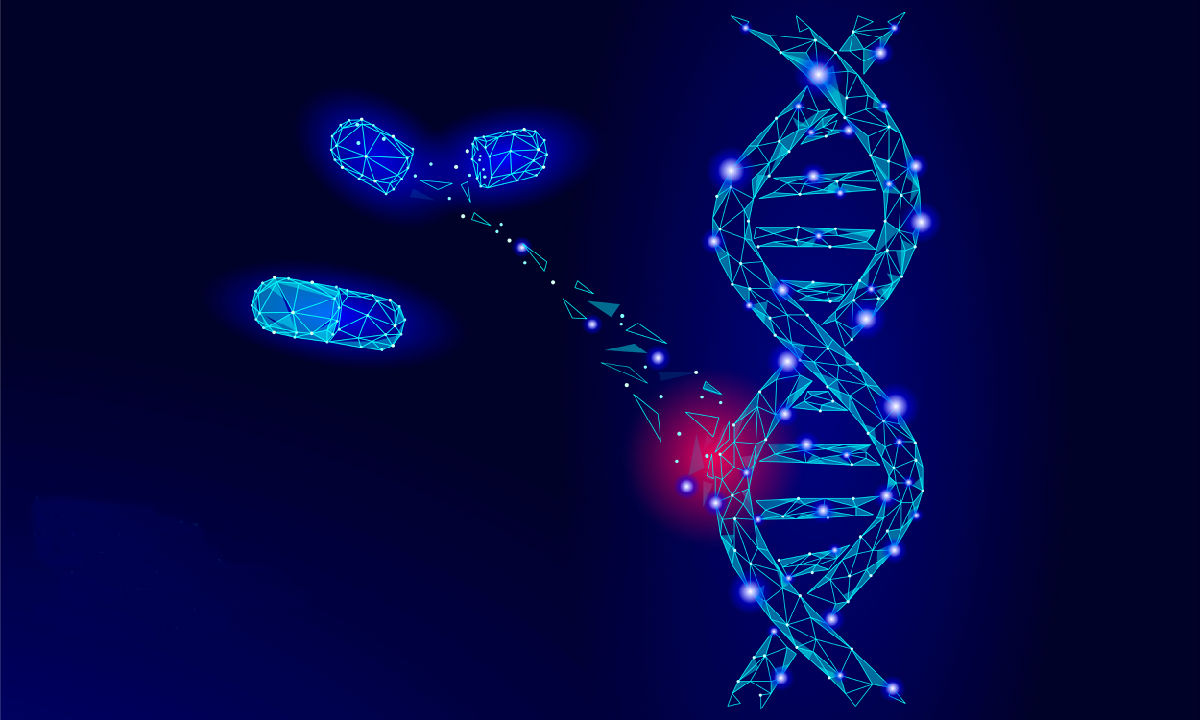

Rare disorders that may be amenable to AAV-delivered gene therapy include aromatic acid decarboxylase deficiency, hemophilia A, hemophilia B, and spinal muscular atrophy.
Resurgent across the biomedical engineering and clinical trial landscape, gene-therapy owes its new vitality to a better understanding of rare diseases, the discovery of new gene delivery vectors, and the development of site-specific genome editing technology. Already pushing up new shoots, gene therapy may flourish if it extends its roots deep into an increasingly fertile manufacturing base. Manufacturing trends that nurture gene therapy’s growth include the development of production systems for adeno-associated virus (AAV) vectors for gene delivery.
All these advances are encouraging gene-therapy developers to stake new claims in rare disorder territory, which is where gene therapy was first applied, before most clinical trials turned from monogenic disorders, such as severe combined immunodeficiency, cystic fibrosis, and Duchenne muscular dystrophy (DMD), to polygenic disorders (such as heart disease, diabetes, and cancer).
Monogenetic disorders resisted early gene therapy, which struggled to achieve long-term expression of genes that were introduced with the intention of replacing or disrupting faulty genes. Also, monogenetic disorders, which affect small patient populations, seemed to offer limited commercial reward.
Given that gene therapies against monogenetic disorders now seem more workable from a technological perspective, old commercial assumptions are being reconsidered. It remains true that monogenetic disorders afflict relatively few people, but monogenetic disorders are numerous. In fact, they account for about 80% of the 7,000 rare disorders that have been identified.
The cultivation of gene therapy for rare disorders is not limited to pharmaceutical, biotechnology, and medical device companies. This kind of gene therapy also enjoys government support. For example, the National Institutes of Health (NIH) Common Fund has allotted approximately $200 million for the NIH Undiagnosed Diseases Network to “accelerate diagnosis of rare and undiagnosed conditions ... and uncover the underlying disease mechanisms associated with these conditions.”
In addition, the NIH has launched the Therapeutics for Rare and Neglected Diseases (TRND), a program that oversees a suite of pilot projects to address specific obstacles in gene therapy development. In collaboration with biotechnology and academic groups, the TRND hopes to scale up gene-vector manufacturing and disseminate the best practices to achieve regulatory approval for new gene therapies.
Delivery Options
“This is a very exciting time for gene therapy in rare diseases,” said Philip J. Brooks, Ph.D., program director, Division of Clinical Innovation and Office of Rare Diseases Research, National Center for Advancing Translational Sciences, NIH. “Two viral vector platforms are emerging—AAV for in vivo gene therapy, and lentivirus for ex vivo gene therapy involving hematopoietic stem cells.”
At the recent Gene Therapy for Rare Disorders 2018 conference in Boston, Dr. Brooks’ optimistic take was echoed by Casey A. Maguire, Ph.D., assistant professor of neurology at Harvard Medical School. Dr. Maguire led a workshop on the current suite of AAV vectors, delivery technologies with improved tissue targeting and carrying capacity, and re-dosing strategies that can avoid immune response complications.
Dr. Maguire indicated that his research team is currently involved in “several gene therapy applications, from broad delivery strategies for specific diseases, such as hereditary deafness and brain tumors, as well as neurological diseases, such as Alzheimer’s and X-linked adrenoleukodystrophy.”
AAV delivery vectors, Dr. Maguire maintained, may be applied not only in gene therapy research, but also in treatments for rare disorders. “Remarkable progress has been made with AAV vectors,” he said, “but to realize their full potential in a larger patient population and for more disease targets, greater innovation is required.”
AAVs possess several advantages. They generate only mild immune responses, and distinct AAV serotypes can be used to deliver genes to many types of tissue. They infect both dividing and nondividing cells, but they do not integrate genetic material into the host genome. AAV-delivered genetic material usually stays outside the genome, serving the cell as a template for protein transcription. (Integration may be achieved, however, if the AAV also delivers genome-editing elements.)
Rare disorders that may be amenable to AAV-delivered gene therapy include aromatic acid decarboxylase deficiency, hemophilia A, hemophilia B, and spinal muscular atrophy. AAV technology accounts for the delivery component of voretigene neparvovec-rzyl (Luxturna), the first directly administered gene therapy approved in the United States that targets a disease caused by mutations in a specific gene. Luxturna is the only approved treatment for inherited retinal disease associated with biallelic RPE65 gene mutations.
Lentiviral vectors have been used to integrate genetic material into the genomes of dividing and nondividing cells to advance cell-engineering applications. These vectors are also showing promise in experimental treatments that involve the harvesting of patient stem cells, their manipulation ex vivo, and their reinfusion into patients. This approach has been used to treat X-linked severe combined immunodeficiency (SCID), Wiskott–Aldrich syndrome, adenosine deaminase-SCID, and leukodystrophies (that is, X-linked adrenoleukodystrophy, metachromatic, and globoid cell leukodystrophies).
Genome Editing
“For the first time, a patient has received a therapy intended to precisely edit the DNA of cells directly inside the body,” said Sandy Macrae, Ph.D., CEO of Sangamo Therapeutics.” We are at the start of a new frontier of genomic medicine.” These stirring words were uttered back in November 2017, when the first patient in a Phase I/II trial, the CHAMPIONS study, received Sangamo’s SB-913, an investigational in vivo genome-editing therapy for people with mucopolysaccharidosis type II (MPS II), also known as Hunter syndrome.
The treatment, which was adminstered at University of California at San Francisco’s Benioff Children’s Hospital in Oakland, involves the introduction of a corrective gene into a precise location in the DNA of liver cells. Once the gene is in its proper place, at a specific location in the albumin gene, it should enable liver cells to produce a stable and lifelong supply of iduronate-2-sulfatase. If this enzyme is inactive or missing due to a mutation of the IDS gene, toxic carbohydrates accumulate in the cells throughout the body.
SB-913 makes use of Sangamo’s zinc finger nuclease (ZFN) genome-editing technology as well as liver-targeting AAV vectors. According to a Sangamo poster presentation at the 2018 WORLDSymposium conference, which took place in San Diego last February, the first two patients treated in the CHAMPIONS study tolerated the SB-913 infusion well.
“No concerning safety issues related to study drug [have been] seen to date,” noted Paul Harmatz, M.D., a pediatric gastroenterologist and a principal investigator for the CHAMPIONS study at the UCSF Benioff Children’s Hospital. “We expect enrollment of remaining patients to proceed on schedule,” added Edward R. Conner, M.D., Sangamo’s chief medical officer, “and to begin to report additional safety and initial efficacy data by mid-year.”
Responding to a request for a general comment on genome editing, Dr. Brooks told GEN that the technology is applicable to the treatment of multiple diseases. “In fact,” he remarked, “the goal of the NIH’s new program is to accelerate the development of therapies based on genome editing.”
Microdystrophin Gene Transfer
At the Gene Therapy for Rare Disorders 2018 conference, Alvaro Amorrortu, chief operating officer of Solid Biosciences, discussed strategic decision-making for scaling manufacturing of gene therapies. In his presentation, Amorrortu drew on Solid Biosciences’ experience in the development of therapies for DMD. In this rare disorder, mutations to the Dystrophin gene result in low levels of the dystrophin protein and, consequently, progressive degenerative muscle disease. Few patients survive into their 30s.
“I am hoping to impart some of our key learnings from our experience ramping up manufacturing processes, capacity, and capabilities in the growing area of gene therapy,” Amorrortu told GEN, “especially for a rare genetic disease with the unique and challenging characteristics of DMD.”
In the day-to-day operations of his company, Amorrortu oversees manufacturing and process development. “Our goal has always been responsible drug development,” explained Amorrortu. “Early investment in manufacturing and process development has been a big part of that effort.
“From the beginning, we have wanted to ensure that manufacturing did not inhibit the drug development critical path, whether it is successfully supplying clinical trials or scaling to meet the needs of the commercial market. This has not always been easy, but we believe we are on the right path.”
In November 2017, Solid Biosciences announced that it had initiated clinical trial activities for SGT-001, the company’s lead microdystrophin gene-transfer candidate for the treatment of DMD. The activities included the dosing of the first patient in IGNITE DMD, a Phase I/II clinical trial at the University of Florida.
SGT-001 was administered on February 14, 2018. Several days later, the patient was hospitalized due to laboratory findings that included a decrease in platelet count followed by a reduction in red blood cell count and evidence of complement activation. “The patient showed no signs or symptoms of coagulopathy (bleeding disorder) and no relevant changes from baseline in liver function tests,” noted a Solid Biosciences press release. “The patient responded well to medical treatment and is currently asymptomatic.”
Solid Biosciences classified this unexpected event as a Suspected Unexpected Serious Adverse Reaction (SUSAR) and reported it to the FDA, which responded by putting a clinical hold on the trial. “We are working with the FDA to better understand the unexpected event that resulted in the clinical hold and put a plan in place to monitor and manage potential events in the future,” stated Ilan Ganot, the company’s chief executive officer.
The company indicated that it remains confident about SGT-001’s potential to significantly benefit patients with DMD. At present, Solid Biosciences is continuing to work on its portfolio of therapies targeting each facet of DMD, ranging from its genetic roots to its multiple disease manifestations.
“Preclinical research shows that gene therapy has the potential to slow or stop the progression of the disease, regardless of a patient’s underlying genetic mutation or stage of the disease,” said Amorrortu. “This to us is tremendously promising, not just from a drug development and science standpoint, but because it can make a real difference in the lives of patients.”
Investigators involved in genomics research and gene therapies for rare, debilitating disorders believe now is the most exciting time for innovative discoveries to come to light. According to Amorrortu, “We we are finally seeing the science coming together, with companies successfully treating patients in clinical trials and now on a commercial scale. The road to this point has been challenging with many setbacks, but patients with rare genetic diseases not only need our continued effort, they deserve it.”
